Affiliate links on Android Authority may earn us a commission. Learn more.
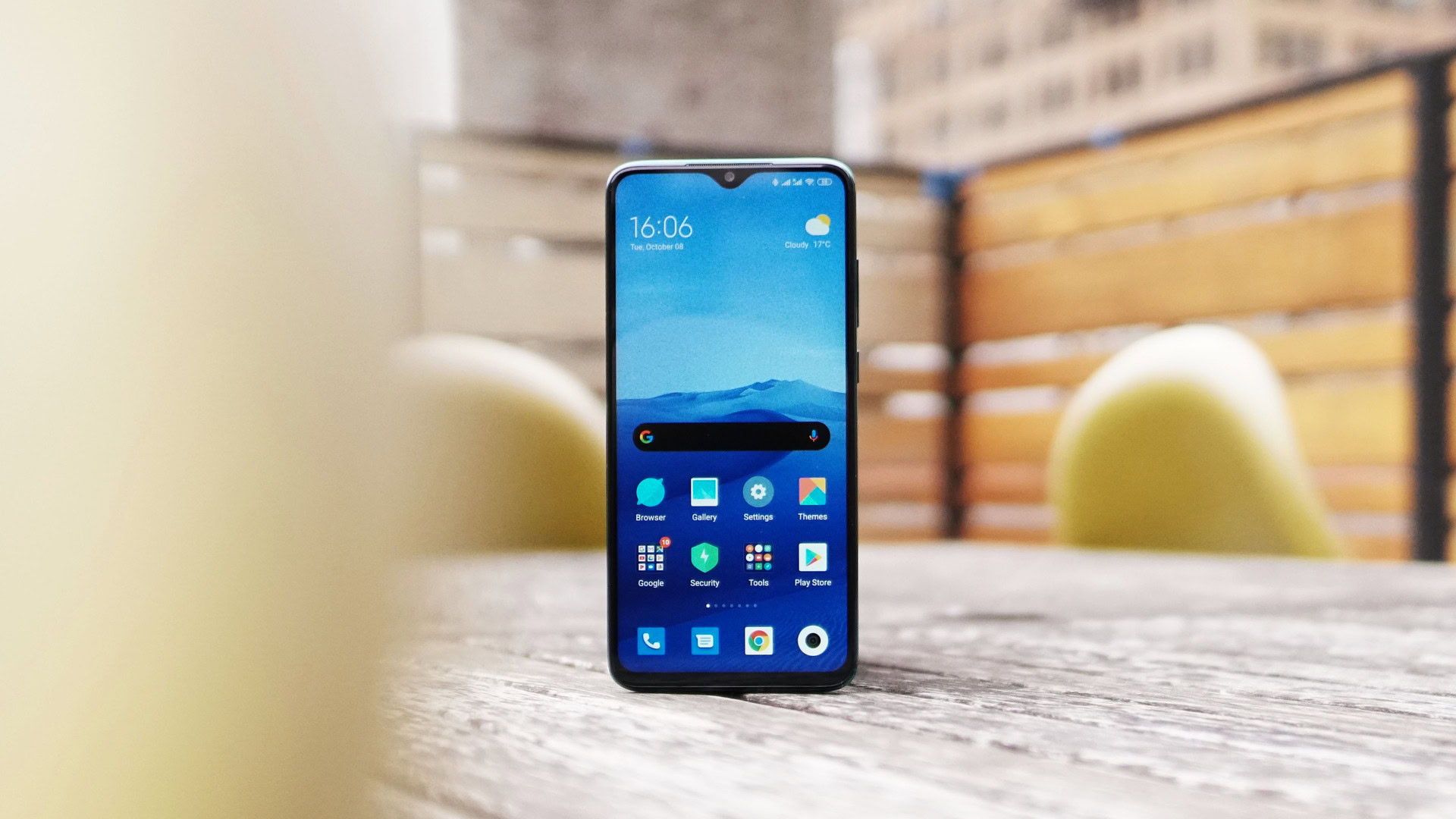
Redmi Note 8 Pro
What we like
What we don't like
Our scores
Redmi Note 8 Pro
Update: The Redmi Note 9 Pro is now available, priced at Rs. 12,999 (~$175) for 4GB/64GB and Rs. 16,999 (~$229) for 6GB/128GB. For more info on what’s new, what’s good and what’s not, check out our full Redmi Note 9 Pro review. For reference, the Redmi Note 8 Pro is currently available starting at Rs. 13,999 on Amazon India for 6GB/64GB.
The Redmi Note 8 Pro adopts the new premium-looking 8 series styling and comes with four cameras and a new chipset. On paper it all sounds pretty great for the price, but how does it stack up in practice? Find out in our Redmi Note 8 Pro review.
What’s new since the Note 7 Pro?
Cameras: The main thing is the quad-camera system on the Note 8 Pro, which, to be honest, isn’t as exciting as it may at first sound. One is a depth sensor, another a macro shooter, and then there’s a wide-angle and regular lens. The Note 7 Pro only had a standard lens and a depth sensor, so it’s still a nice upgrade. We’ll dive into the cameras a little deeper later. The new selfie camera also gets bumped up to 20MP from 13MP on last year’s model.
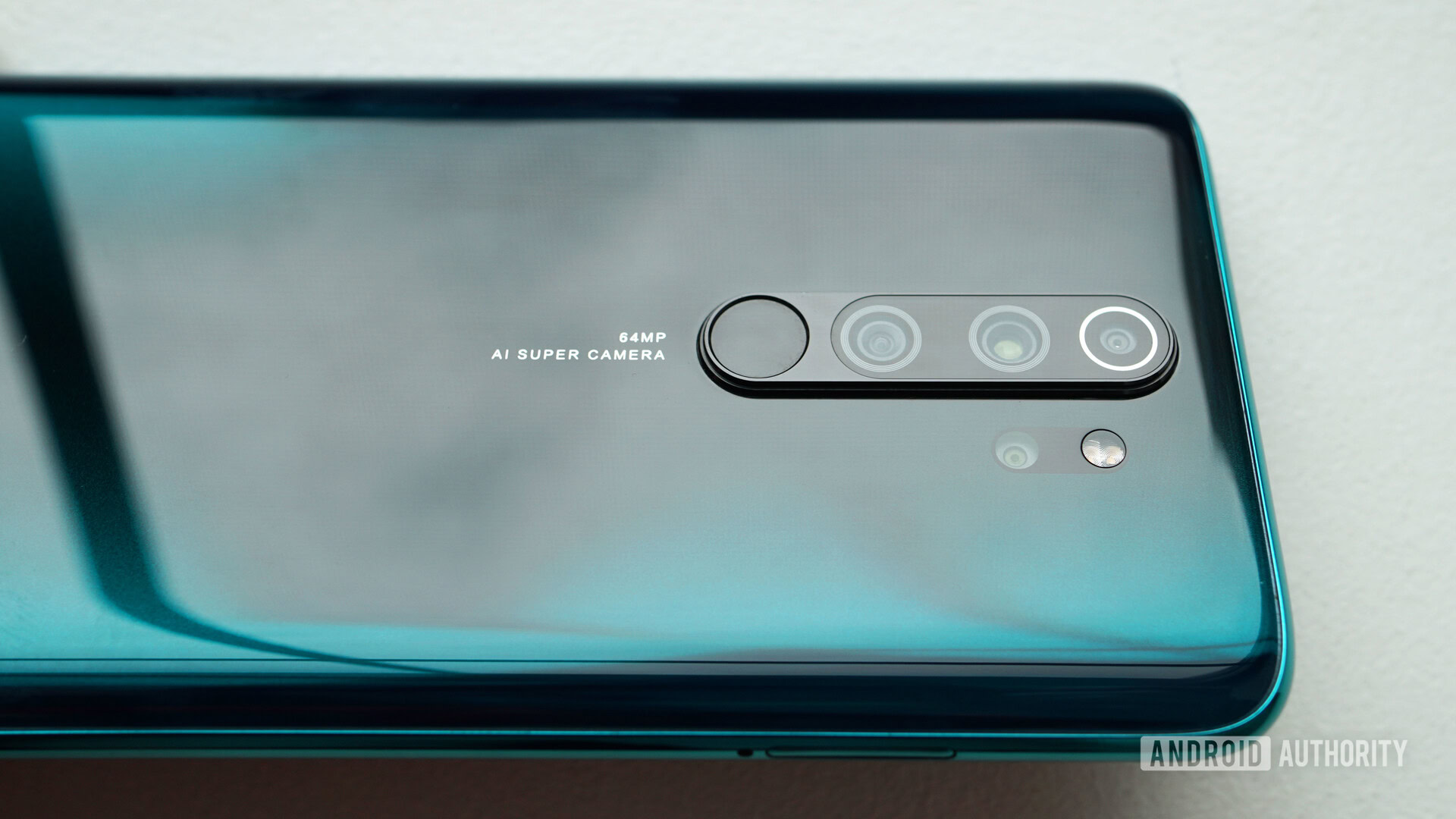
Battery: There’s a battery bump here too, from 4,000mAh in the Note 7 Pro to 4,500mAh in the Note 8 Pro. The Note 8 Pro battery is pretty good, with all-day battery life definitely possible and an 18W charger in the box.
Chipset: Where the Note 7 Pro used the Qualcomm Snapdragon 675, the Note 8 Pro switches to the MediaTek Helio G90T chipset. It handles gaming very well and the Note 8 Pro certainly doesn’t feel like it suffers in the performance department. You might be disappointed to know there’s no Snapdragon action here, but you really shouldn’t worry.
Design: The Note 8 Pro adopts the new design styling of the 8 series, and pairs Gorilla Glass 5 on the front and back with a polycarbonate frame. I actually like the plastic trim here, as it doesn’t feel cheap, helps keep costs down, and should provide slightly better impact resistance than metal. Regardless, the Note 8 Pro is pretty hefty at 200g.
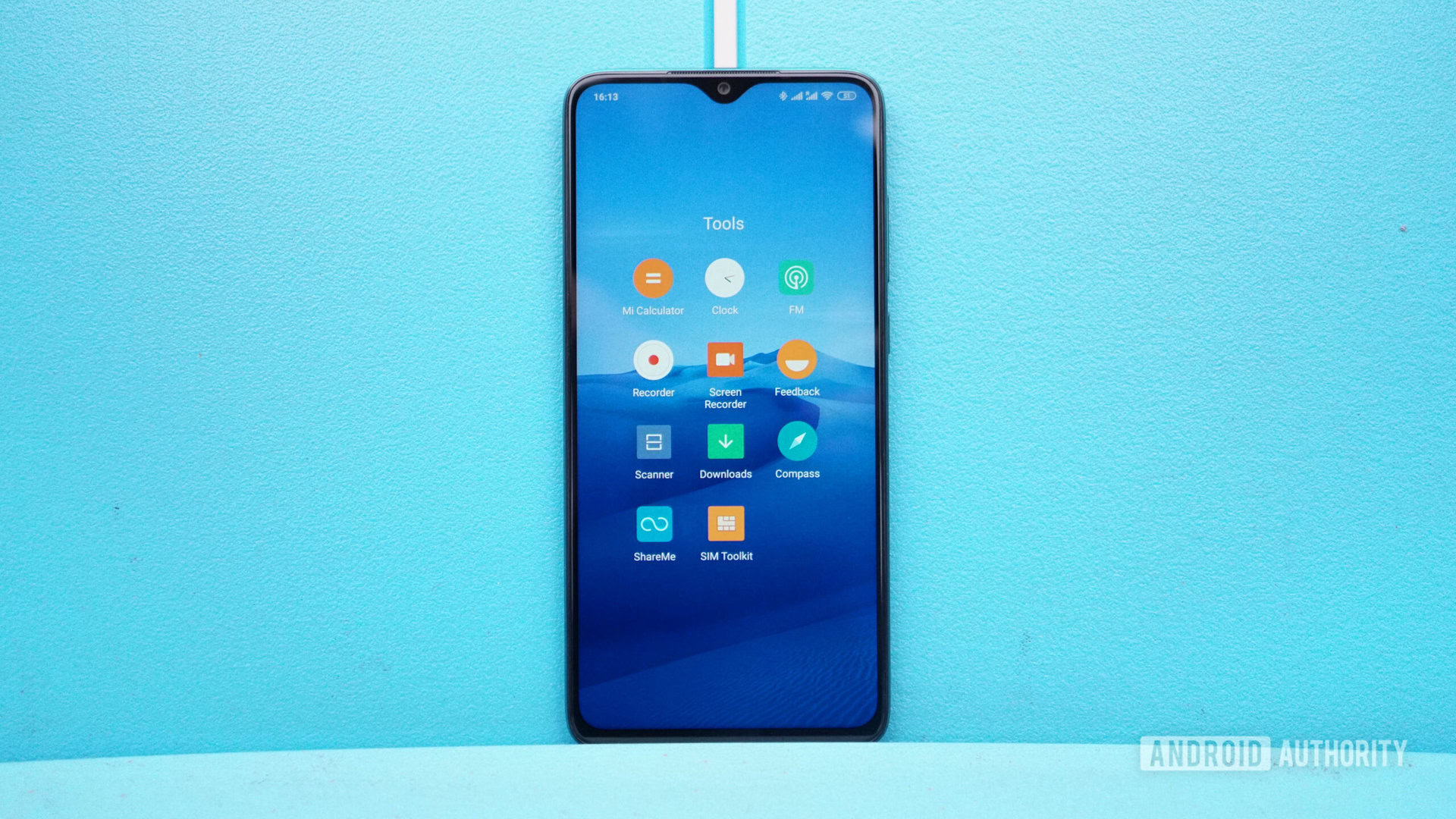
How’s the Note 8 Pro’s screen?
- 6.53-in IPS LCD
- Full HD+ (2,340 x 1,080)
- 91.4% screen-to-body ratio
- 19.5:9 aspect ratio
- Gorilla Glass 5
- HDR support
The Redmi Note 8 Pro display is an IPS LCD, which is a bit of a shame considering you can get OLED panels at this price point. Nevertheless, while it isn’t fantastic it’s still pretty good for an LCD. It gets super bright and looks fine, with a relatively subdued color palette and good contrast. If you like your displays super-saturated this won’t be to your liking, but I don’t mind it.
There’s a nice dark mode on the Note 8 Pro, and despite using an LCD panel, the contrast levels are sufficient for it to not look gray. The resolution is sufficient for me, but the panel is a little cool out of the box. You can adjust the display to make it cooler or warmer and there’s a color wheel for subtle adjustments. You’ve also got several contrast options, so it’s pretty easy to tweak to your liking. The recent Android 10 update brought Widevine L1 support for Netflix HD.
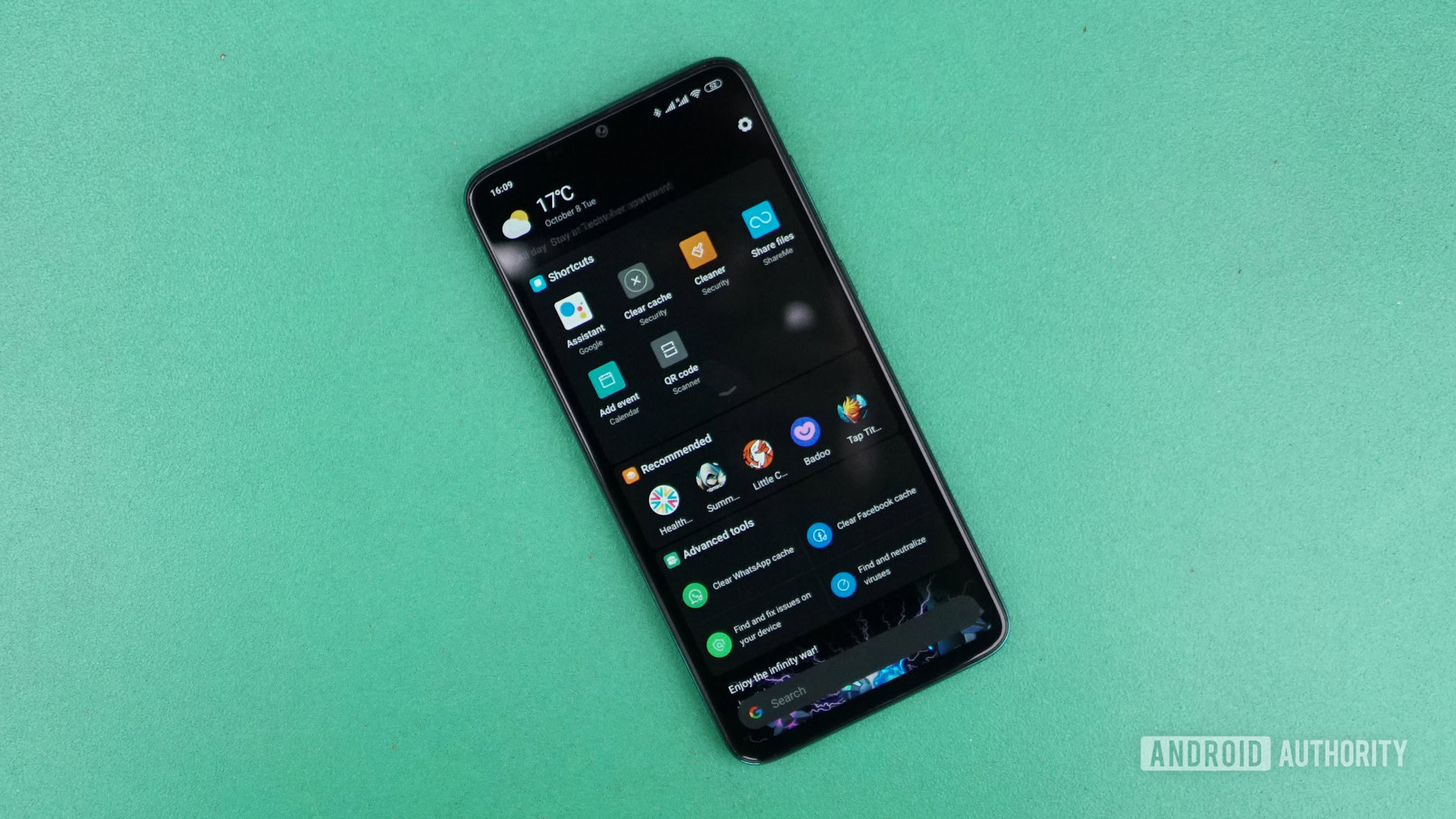
What’s the Redmi Note 8 Pro battery like?
The Redmi Note 8 Pro battery is pretty good if you’re not using the highest screen brightness settings all the time. It comes with an 18W charger and it also supports USB-PD and Quick Charge 4.0. In my testing, Xiaomi’s claims of a full charge in two hours were spot on. That’s not great, but it’s not terrible. A 35% charge is possible in half an hour of charging, and an hour’s worth of charging will get you to 65%.
My worst battery results came on days spent mostly outside, on cellular data, taking lots of photos with high screen brightness. Those days would get me between three to four hours of screen-on time. On regular days spent half inside and half outside with settings to match, I was averaging between four and six hours. My best days delivered in excess of eight hours because I was inside connected to Wi-Fi all day with low screen brightness.
See Also: Phones with the best battery life | Fastest charging phones
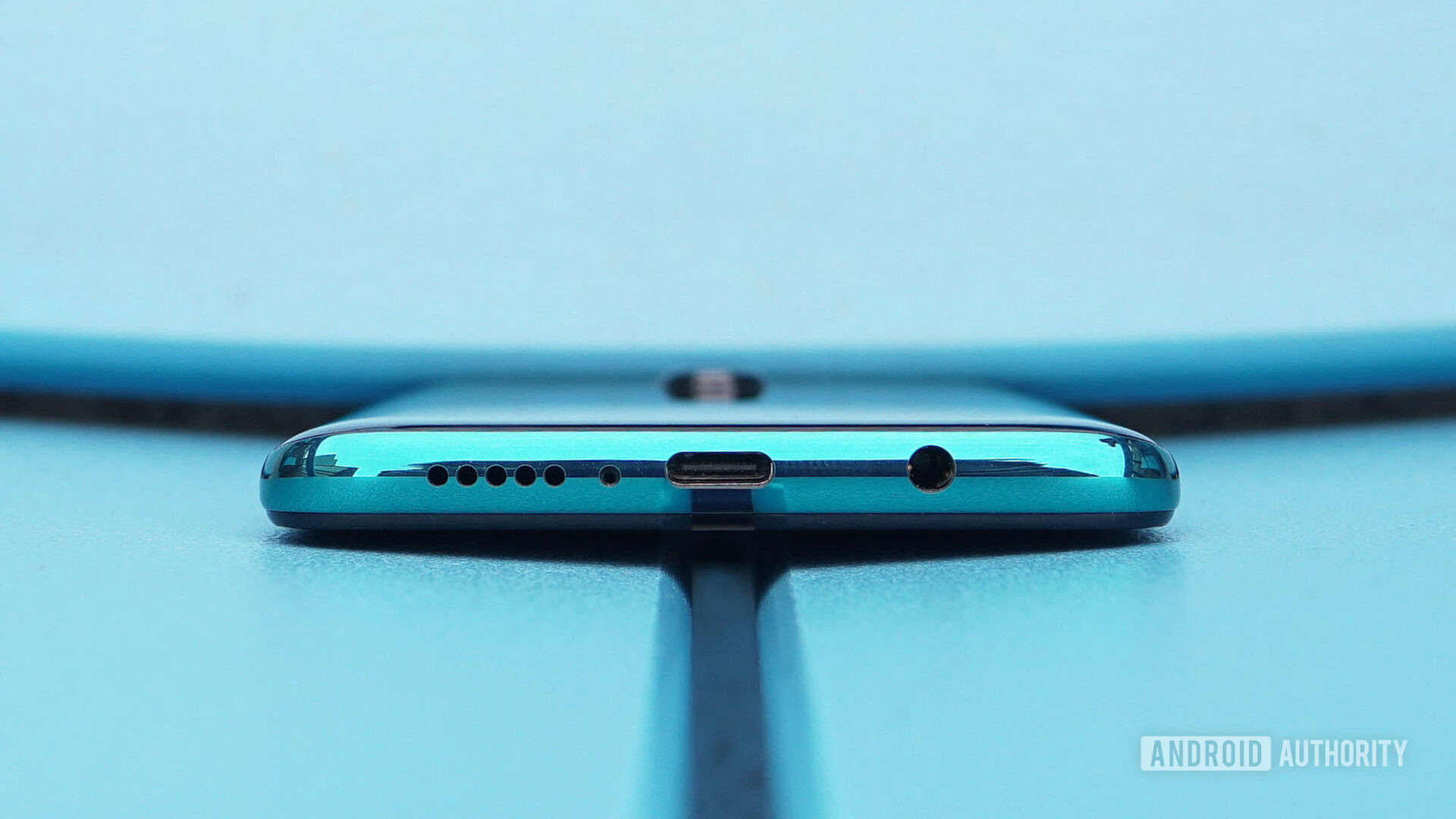
Does it have a headphone jack?
Yes, it does, and it’s really good. The Note 8 Pro scored very well in our audio testing for headphones. Even if you don’t rely on wired headphones all the time, the Note 8 Pro has you covered on the wireless front. SBC, AAC and LDAC provide basic and high-quality Bluetooth codec options, but despite AptX, AptX HD, AptX Adaptive appearing in developer options, the Note 8 Pro doesn’t ship with the required libraries (thanks to Oleksii for pointing this out). As with wired audio, the Note 8 Pro scored very well against the competition when it comes to Bluetooth thanks to LDAC.
The Note 8 Pro scored very well in our audio testing for headphones, both wired and wireless.
The only real audio let-down here is the mono bottom-firing speaker, which, while okay, isn’t loud or crisp enough for my liking. This isn’t exactly make-or-break, but it’s good to know if you prefer speakers over headphones.
Beyond the 3.5mm jack, the Note 8 Pro also has an IR blaster and FM radio, plus it has NFC for Google Pay. There’s still no official IP rating here, but the Note 8 Pro is supposedly splash resistant. You should be okay if you get caught in the rain.
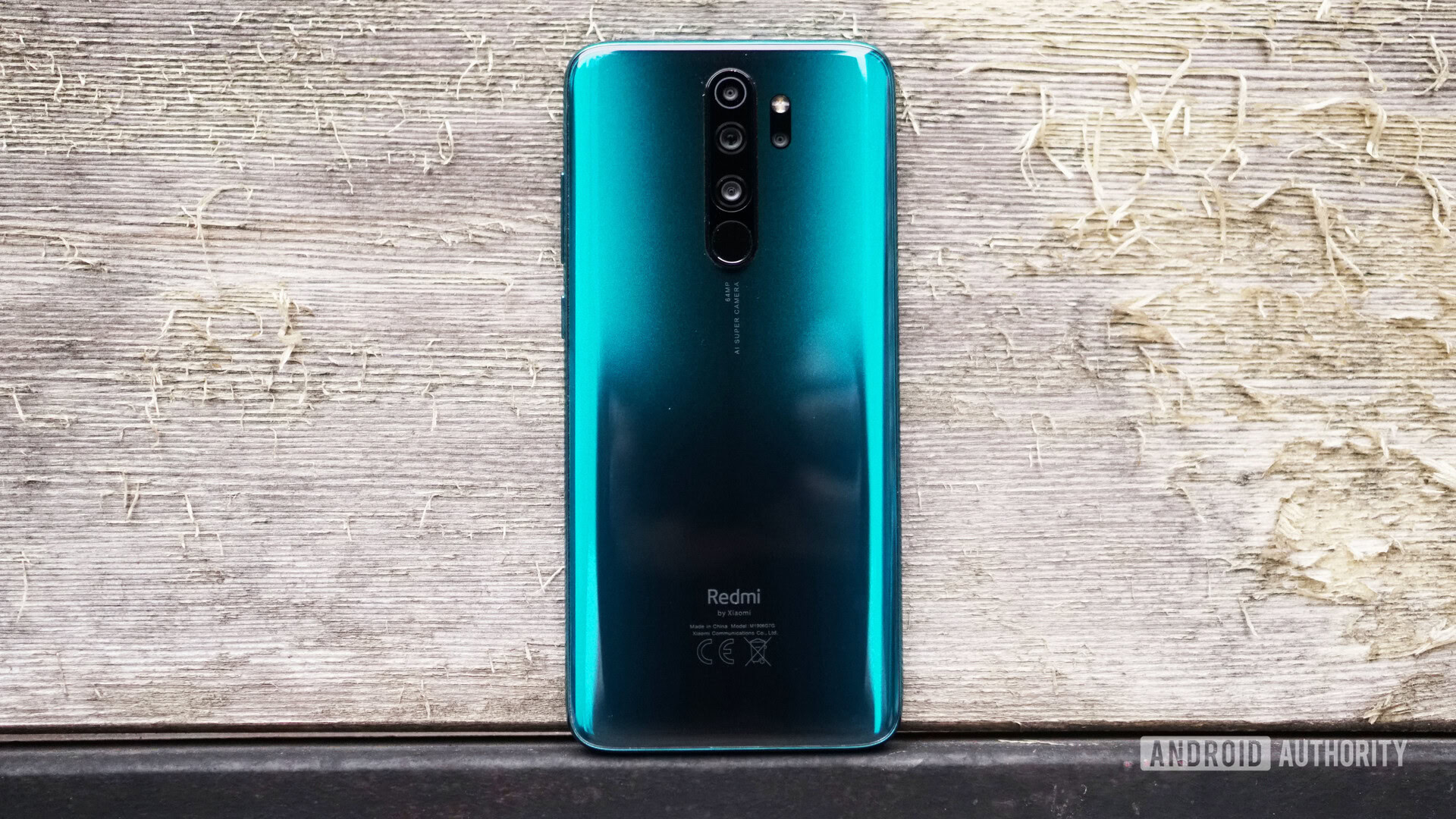
What’s it like for gaming?
- Media Tek Helio G90T
- Mali-G76 GPU
- LiquidCool vapor chamber
- 6GB/64GB, 6GB/128GB plus microSD
It’s great. The 12nm Helio G90T is really capable on the gaming front. In our testing, the Note 8 Pro slightly outperformed the Redmi K20, which runs the Snapdragon 730 mobile platform. MediaTek was going after the Snapdragon 730 with the G90T and from what I’ve seen it has succeeded.
MediaTek was going after the Snapdragon 730 with the G90T and from what I've seen it has succeeded.
The Note 8 Pro has a LiquidCool vapor chamber for heat dissipation. Regardless of whether I was gaming or running benchmarks, I never noticed the chassis getting warm to the touch. Combine this with HyperEngine game optimizations — which switch to a combination of Wi-Fi and cellular data if your Wi-Fi signal gets weak — and you shouldn’t notice any hiccups or lost frames while gaming. The Note 8 Pro can also connect to both 2.4GHz and 5GHz Wi-Fi networks simultaneously.
It won’t be an easy task for MediaTek (or me for that matter) to convince you that the G90T is up to snuff for gamers. I’d suggest heading to a store where you can try it out for yourself. I wouldn’t consider myself a die-hard mobile gamer, but from what I saw during my Note 8 Pro review period, Qualcomm silicon isn’t everything. The G90T certainly does a good job on the Note 8 Pro.
What’s the Redmi Note 8 Pro camera like?
- Main camera: 64MP, f/1.9, 79-degree FoV, 0.8-micron pixel size, 1/1.7-inch sensor, PDAF
- Wide-angle: 8MP, f/2.2, 120-degree FoV, 1.12-micron pixel size, 1/4-inch sensor
- Macro: 2MP, f/2.4, 1.75-micron pixel size, 1/5-inch sensor
- Depth: 2MP, f/2.4, 1.75-micron pixel size, 1/5-inch sensor
- Front-facing: 20MP, f/2.0, 0.9-micron pixel size
It’s complicated. The Note 8 Pro camera oscillates between surprisingly good and not great at all. In daylight, the 64MP Samsung GW1 produces good results at 16MP with tons of detail and good contrast. There’s a fair bit of post-processing going on and over-sharpening is clearly visible when you zoom in on the results. Thankfully, colors aren’t oversaturated and come out quite natural looking.
I was pleasantly surprised by the quality of 64MP shots on the Redmi Note 8 Pro.
Manually switching to 64MP in daylight is a satisfying move. 64MP shots maintain all that detail and allow you more freedom to crop after the fact. They do take up a lot more space than pixel-binned images (18MB versus 7MB). Nevertheless, I was pleasantly surprised by the quality of 64MP shots on the Redmi Note 8 Pro. You can check out all the full-sized images here if you want to pixel peep.
The 64MP sensor gives you options in low-light because native pixel-binning means you can absorb more light data at 16MP. If you’re super-steady, you can get some decent nighttime photos. Even shooting at 64MP at night is possible, and I often preferred those photos for their naturalness to the 16MP version.
Night mode was generally quite good but the results weren’t always reliable. You really need to be leaning against something for super clear night mode shots. If you get it right, Night Mode will produce some of the best results you’ll get out of the Note 8 Pro. Night mode nicely drops highlights while bumping the dark spots without overdoing it. Regardless of whether you’re in Night Mode or 16MP mode, there’s still a fair bit of visible noise at night and don’t even think about taking a photo while moving.
The wide-angle camera is a lot of fun during the day, but I wouldn’t even touch it at night. For instance, just check out the blown-out highlights and weirdly purple sky in the wide-angle shot above. The lack of versatility here is a let-down, making me wonder why Xiaomi bothered going for a wide-angle lens it doesn’t utilize properly.
It’s the same story with the 2MP macro camera. It’s fun, but it also suffers from over-sharpening and is little more than a novelty you’ll probably rarely use.
The depth, macro, and wide-angle lenses are nowhere near as good as the primary shooter.
The 2MP depth sensor theoretically should provide better-looking bokeh and cleaner edge detection in portrait mode. I couldn’t tell the difference between portrait mode photos taken with it doing its thing and others when I covered it with my finger. As with most cameras, the cutout and naturalness of portrait mode shots were pretty debatable. If you ask me, the depth, macro, and wide-angle lenses are nowhere near as good as the primary shooter.
Selfies were pretty detailed thanks to the 20MP front-facing camera, but it struggled in low light environments. At the very least I wasn’t an over-smoothed beauty queen in the resulting images, so I’ll give Xiaomi points for naturalness.
The best “extra” in the Redmi Note 8 Pro camera is surprisingly not one of the lenses, but the 2x digital zoom available in the camera app. It relies on the massive 64MP sensor, but the results are quite often indistinguishable, if not better than, a cropped and enlarged normal photo. As a result, the Note 8 Pro could have come with just the primary lens and I don’t think you would be missing out on anything.
Generally speaking, HDR is okay but nothing to write home about, especially on the wide-angle camera. The Note 8 Pro tends to blow out highlights a bit and struggles with dynamic range. Because of this, some shots end up too dark in the shadows with strong contrast while others are too light and come out kind of flat. Despite having four lenses, the Note 8 Pro unfortunately lacks the versatility you might expect from a quad-camera phone.
The Note 8 Pro could have come with just the primary lens and I don't think you would be missing out on anything.
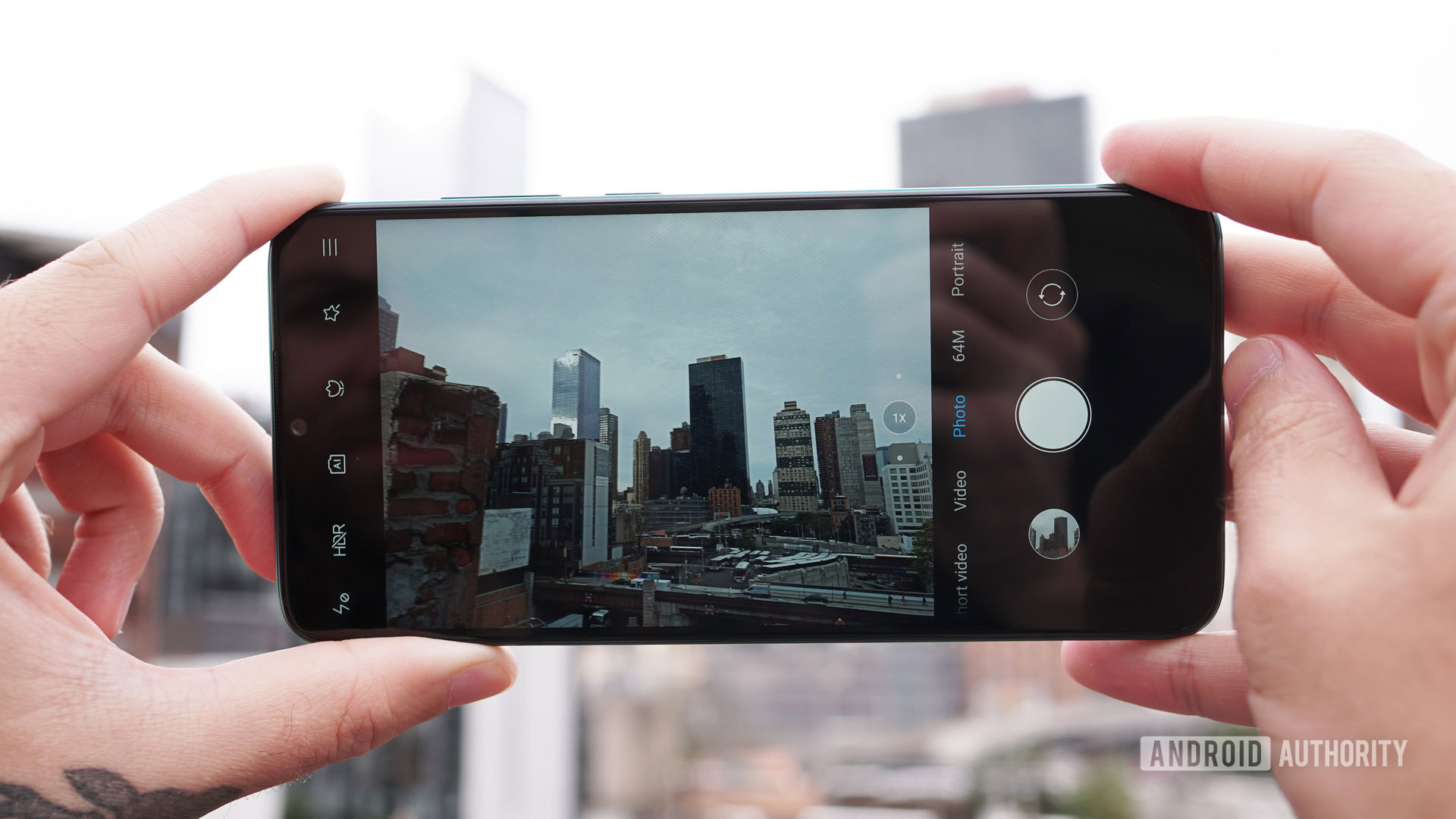
Redmi Note 8 Pro specs
| Redmi Note 8 Pro | |
|---|---|
Display | 6.53-inch IPS LCD, 19.5:9 aspect ratio, Waterdrop notch, Full HD+ (1,080 x 2,340) resolution, 91.4% screen-to-body ratio HDR support |
Chipset | MediaTek Helio G90T (2 x Cortex A76 and 6 x Cortex A55 cores) Mali-G76 MC4 GPU |
RAM/Storage | 6GB/64GB 6GB/128GB |
Camera | Rear: 64MP main (Samsung QW1), f/1.9, 79-degree fov, 0.8-micron pixel size, 1/1.7-inch sensor, PDAF 8MP ultra-wide, f/2.2, 120-degree fov, 1.12-micron pixel size, 1/4-inch sensor 2MP macro, f/2.4, 1.75-micron pixel size, 1/5-inch sensor 2MP depth sensor, f/2.4, 1.75-micron pixel size, 1/5-inch sensor 4K video at 30fps, Full HD video at 30/60fps and slo-mo at 120fps, HD video at 30fps and slo-mo at 120, 240 and 960fps (interpolated) Front: 20MP, f/2.0, 0.9-micron pixel size, Full HD video at 30fps |
Battery | 4,500mAh 18W charging Quick Charge 4.0 and USB-PD support USB-C |
Dimensions | 161.4 x 76.4 x 8.8mm |
Weight | 200g |
Colors | Forest Green Mineral Gray Pearl White |
Biometrics | Capacitive fingerprint scanner Face unlock |
Sensors | Proximity sensor, In-screen ambient light sensor, Accelerometer, Gyroscope, Electronic compass, Vibration motor, IR blaster |
Headphone jack | Yes |
Connectivity | LTE FDD: B1/B2/B3/B4/B5/B7/B8/B20/B28 LTE TDD: B38/B40 WCDMA: B1/B2/B4/B5/B8 GSM: B2/B3/B5/B8 Wi-Fi (2.4GHz and 5GHz): 802.11a/b/g/n/ac Wi-Fi Direct/Wi-Fi Display Bluetooth 5.0 NFC |
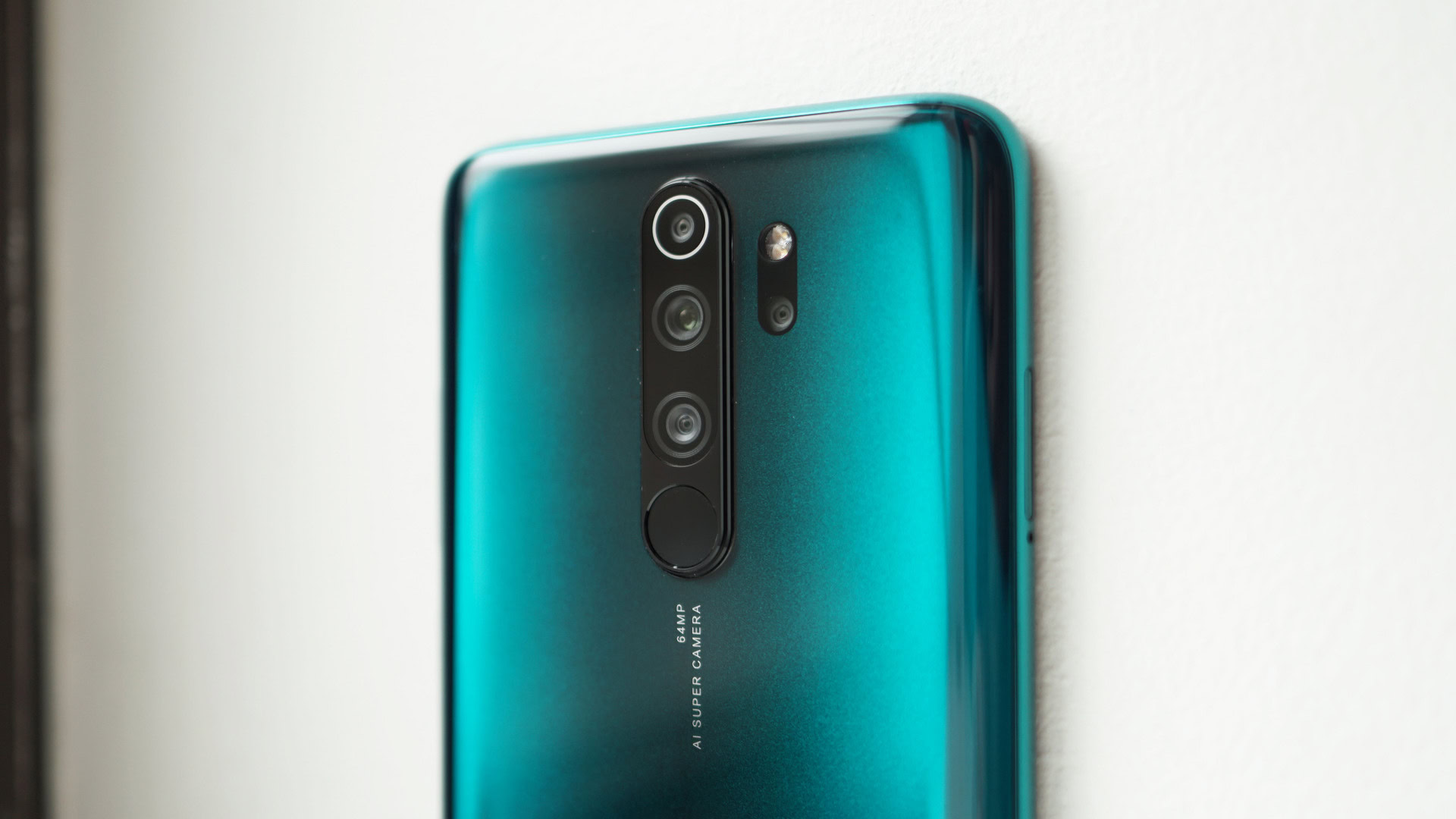
Is the Note 8 Pro worth the money?
Absolutely. There’s nothing super revolutionary here, but for the price you pay, the package is pretty solid across the board. The quad-camera is a bit of a let-down, but is made up for by the reliable 64MP sensor. The Note 8 Pro has a good battery, decent screen, solid build quality, capable software (that, of course, won’t be to everyone’s liking), and excellent audio whether you’re wired or wireless.
Xiaomi has also been fairly proactive with software updates for the Note 8 Pro but security patches have been lacking. The company shipped the Android 10 based MIUI build in late March, but this included the much older January security patches. On the plus side, the company finally enabled HD support for Netflix
Earlier, the phone got a brand new UI design with accessibility features like quick replies and dynamic sound effects.
There's nothing super revolutionary here, but for the price you pay, the package is pretty solid across the board.
At launch, the Note 8 Pro’s most obvious competitor was the realme XT which took things up a notch with an OLED panel and in-display fingerprint sensor while also sporting a 64MP sensor.
Since launch, however, the competition has dramatically increased.
The recently-announced Redmi Note 9 Pro adds some updated specs including a Snapdragon 720G for Rs. 12,999 (~$177) for the 4GB/64GB variant and Rs. 16,999 (~$232) for 6GB/128GB, although its primary sensor drops to 48MP. The Rs. 15,999 POCO X2 offers an even faster Snapdragon 730 chipset as well as a 120Hz display and 64MP camera. And the Rs. 16,999 realme 6 Pro delivers the Snapdragon 720G, a 90Hz display, 64MP sensor, and 30W fast charging. With the Note 8 Pro still priced at Rs. 15,999 on Amazon India and $238 on Amazon in the US, it makes no sense to opt for it over the Redmi Note 9 Pro.
The Note 8 Pro is still a good option among many good options. Just don’t be lured by the promise of its four cameras, which, even after the Android 10 update, still don’t perform as well as they could. If you’re after solid performance with good battery life (and can get by relying mostly on the main camera) the Redmi Note 8 Pro is worth a look, but as of May 2020, there are many other alternatives worth checking out.
- Redmi Note 8 Pro 6GB RAM, 64GB storage — Rs. 15,999 (~$210)
- Redmi Note 8 Pro 6GB RAM, 128GB storage — Rs. 16,999 (~$223)
- Redmi Note 8 Pro 8GB RAM, 128GB storage — Rs. 18,999 (~$249)